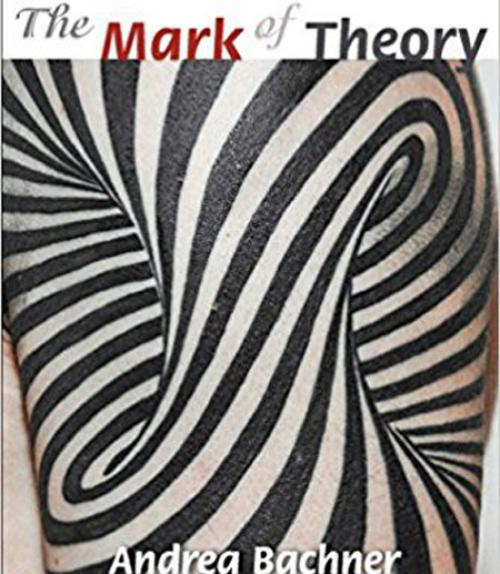For Andrea Bachner, inscription – the moment in which a surface is being marked – is a metaphor, but it also draws on real practices and has real repercussions. In her new book, “The Mark of Theory: Inscriptive Figures, Poststructuralist Prehistories,” Bachner explores the role inscription plays, from literature and media to trauma theory, race and gender to psychoanalysis, sound and ultimately ethics.
“What is interesting for me is that inscription has become the center of much of contemporary thought, defining the relationship between materiality and meaning. Inscription is translated as the moment in which matter – the concrete – and meaning – the abstract – actually coincide and produce each other,” explains Bachner, associate professor of comparative literature in the College of Arts and Sciences.
Bachner uses inscription to create a genealogy of contemporary thought, as well as a critique of poststructuralism. “In order to think about theory and materiality, we have to rethink poststructuralism yet again,” she says.
The book’s four chapters each address a different kind of inscriptive technology: tattooing, circumcision, photography and phonography. “We have to pay attention to concrete phenomena, the objects and practices that underlie abstract thought. They’re what drives and determines theoretical thought and the possibility of what we think,” she says.
In Chapter 1, “Savage Marks: Subjection and the Specters of Anthropology,” Bachner looks at how contemporary theories imagine subjection, “the production and control of the subject in and through social structures – a process of inscription by which power quite literally ‘writes’ its script into human flesh,” as, for instance, in Franz Kafka’s “In the Penal Colony.”
In the second chapter, “Impact Erasure: Psychoanalysis and the Multiplication of Trauma,” Bachner focuses on the use of inscriptive metaphors in trauma theory, from Freud’s psychoanalytical models to contemporary theorists.
Chapter 3, “Stings of Visibility: Picture Theories and Visual Contact,” explores how media studies, especially reflections on photography, uses inscription. “This chapter traces how descriptions of the photographic act as a process of impression mediated by light have turned into metaphors of reception in which the luminous imprint of the photograph is ‘translated’ into a violent impact on she who looks at a photograph,” writes Bachner.
The last chapter, “Out of the Groove: Aural Traces and the Mediation of Sound,” examines theoretical models of sound media, exploring the links between sound and writing. “As in the case of photography, sound media – such as the tellingly named gramophone – are often theorized in terms of writing,” writes Bachner. “Through the graphocentric lenses of some proponents of media studies, the recording and reproduction of sound thus becomes another technology of inscription.”
According to Bachner, the heart of her work is an investigation of the concrete examples that drive theoretical thought. “Theoretical reflection can often sound highly abstract, but concrete phenomena and problems drive it. This is why inscription is so important for me, because it is a phenomenon that has a concrete basis. Marks on a body, for example, are connected to corporeality and matter. When these are translated into theoretical thought, we see the moment that makes theory think about the coming into being of.”
This story also appeared in the Cornell Chronicle.




